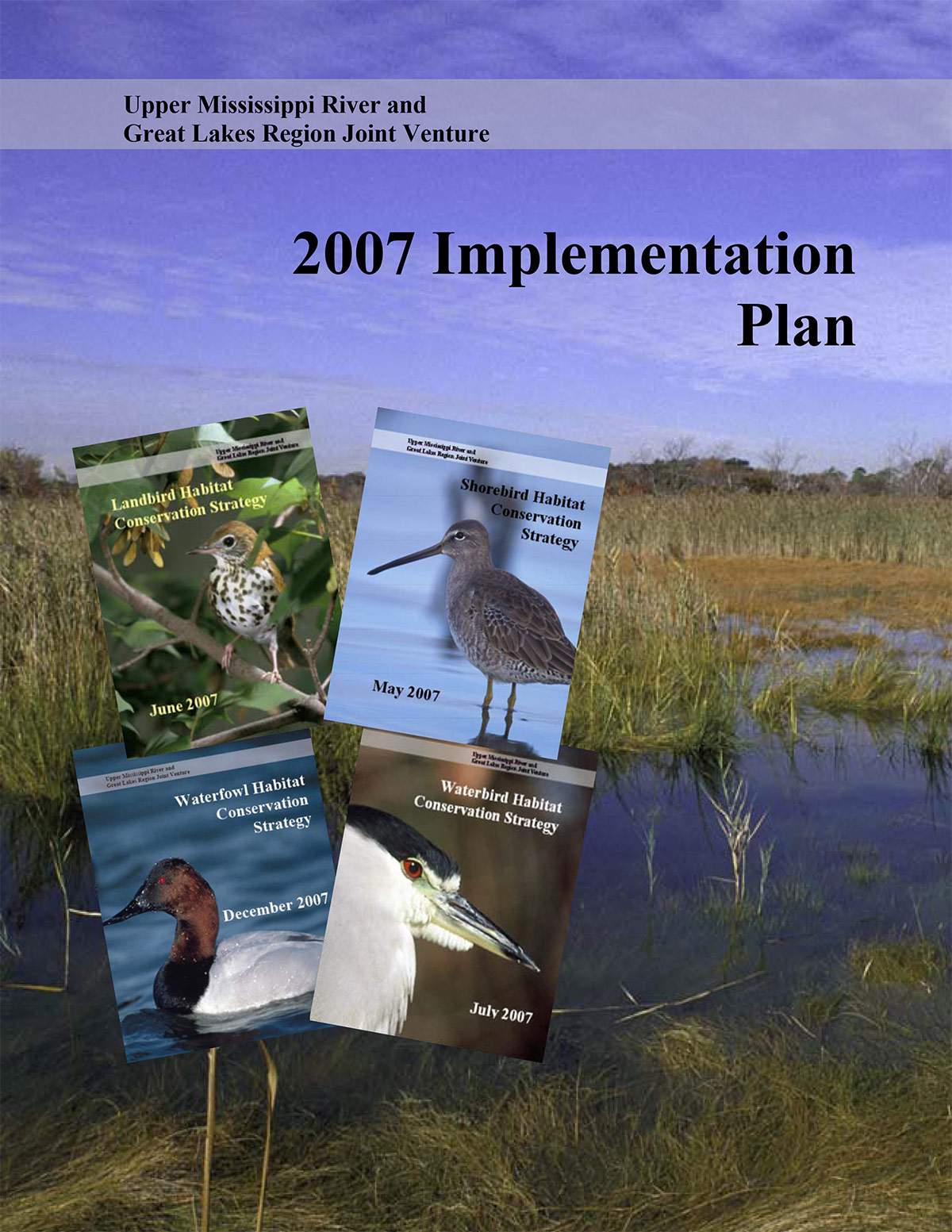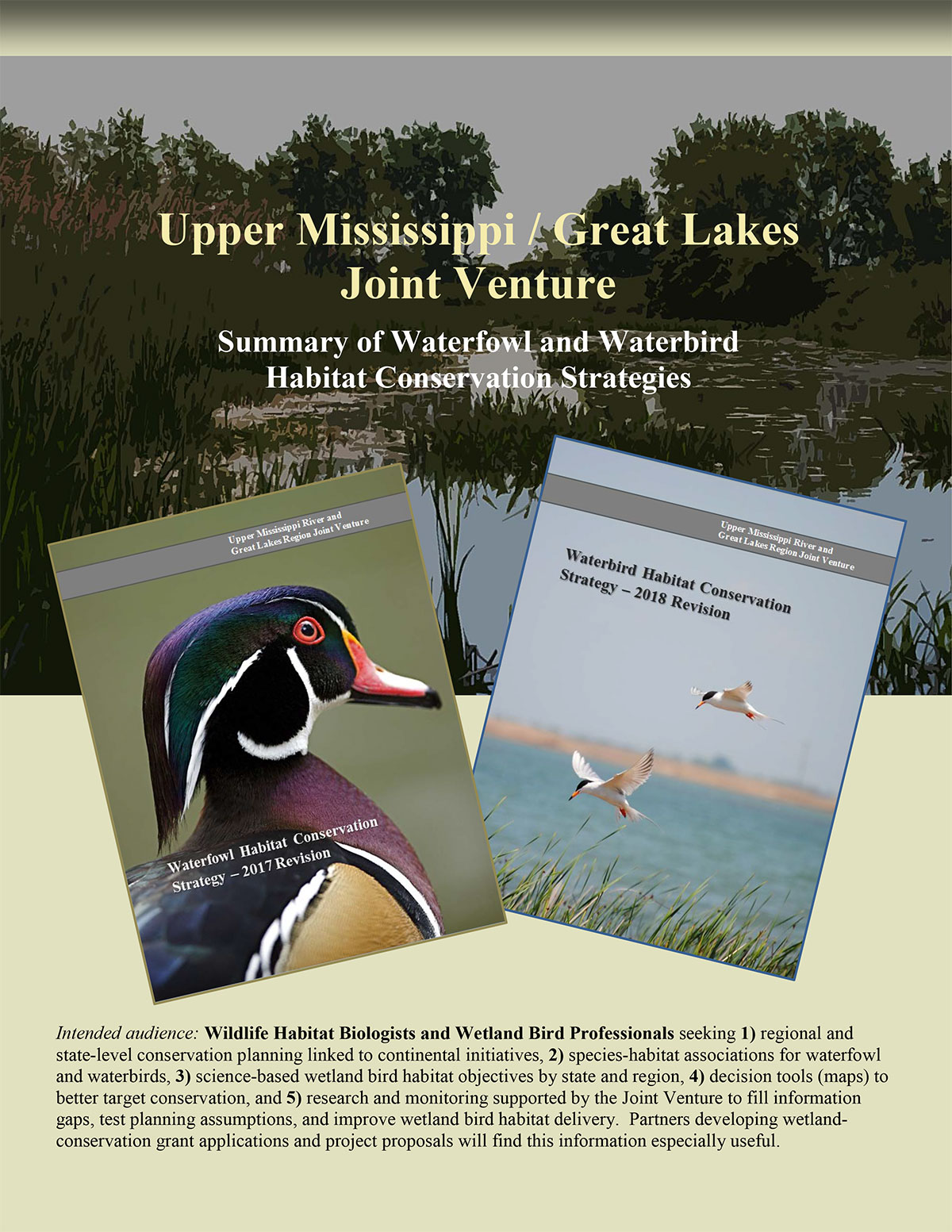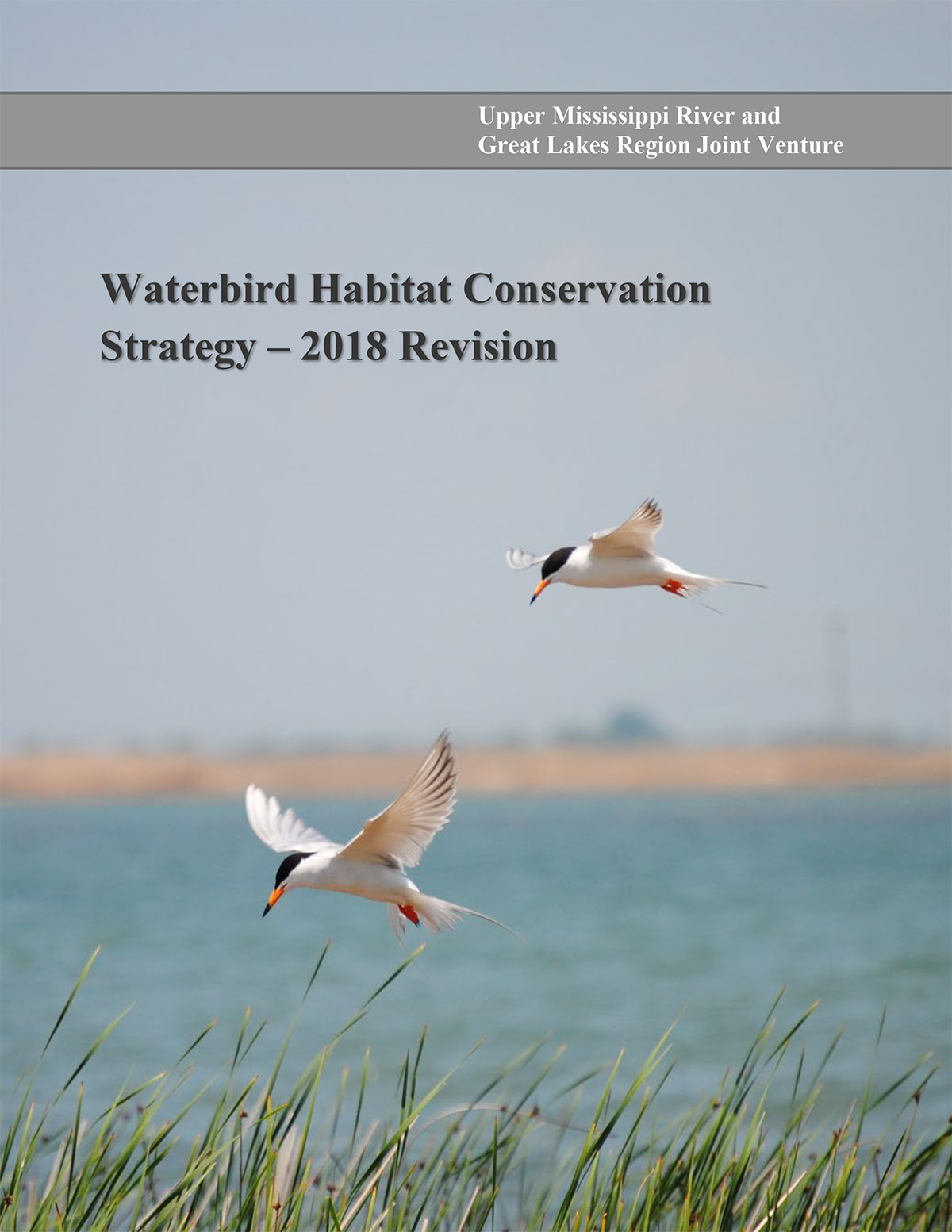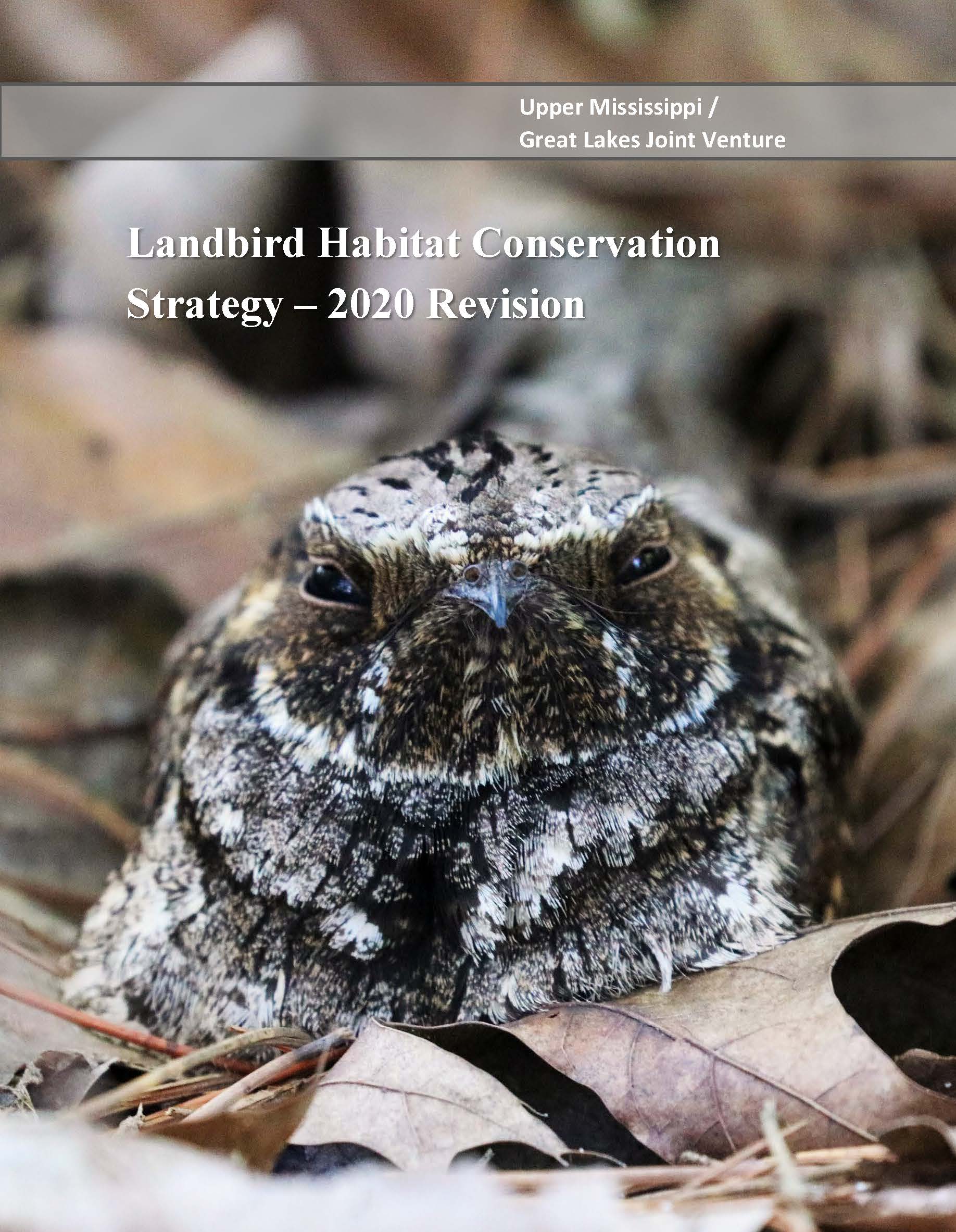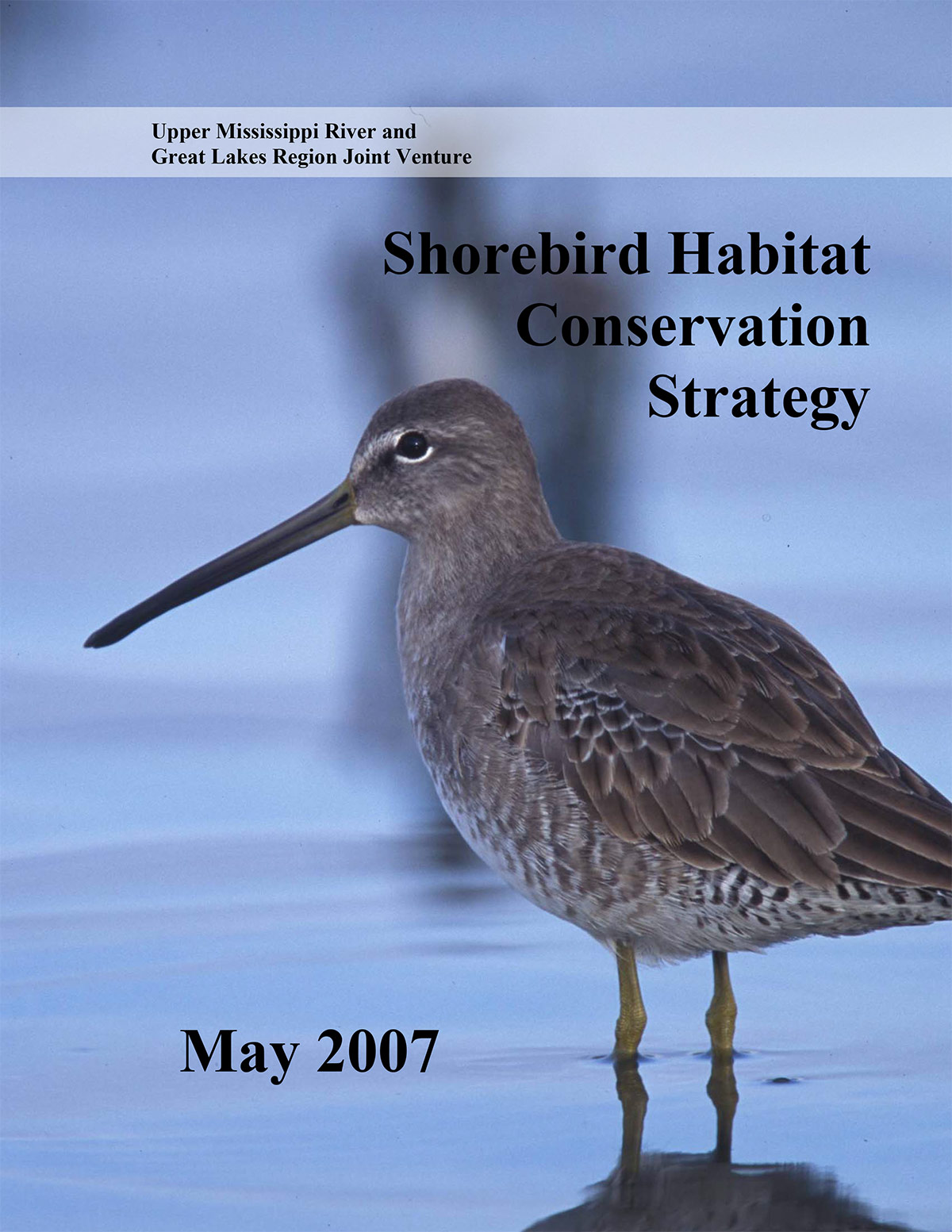Joint Venture Plans
2007 Implementation Plan
Please see the updated Waterfowl and Waterbird Habitat Conservation Strategies below for latest population and habitat objectives.
Bird habitat conservation is implemented at local scales, but avian ecologists have recognized the need to integrate continental bird priorities into local bird habitat recommendations. A primary role of bird conservation Joint Ventures (JVs) is to step-down continental habitat priorities for waterfowl, waterbirds, landbirds, and shorebirds to each JV region. Bird conservation in the Upper Mississippi River and Great Lakes Region, and throughout North America, is becoming increasingly sophisticated. Scientists are better integrating contemporary biological, ecological, and economic principals in an effort to improve the foundation for bird habitat conservation decisions. Use of new technologies and computer power, biological models, and digital spatial data has increased potential effectiveness of landscape-scale planning and related decision tools. Moreover, regional JVs are implementing management actions while promoting 1) research to test planning assumptions, 2) population monitoring to assess conservation effectiveness, and 3) adaptive management based on evaluation results.
Summary of Waterfowl and Waterbird Habitat Conservation Strategies
The JV Science Team consists of top bird scientists from across the JV region. The highly technical documents they produce provide a wealth of scientific information as well as a habitat objectives based on population objectives. One criticism of JV planning documents has been their length and high level of sophistication. To address this concern, key information from the recently revised waterfowl (2017) and waterbird (2018) strategies was condensed and summarized into a single 14-page document. The intended audience for this summary is Wildlife Habitat Biologists and Wetland Bird Professionals seeking the following: 1) regional and state-level conservation planning linked to continental initiatives, 2) species-habitat associations for waterfowl and waterbirds, 3) science-based wetland bird habitat objectives by state and region, 4) decision tools (maps) to better target conservation, and 5) research and monitoring supported by the Joint Venture to fill information gaps, test planning assumptions, and improve wetland bird habitat delivery. Partners developing wetland-conservation grant applications and project proposals will find this information especially useful.
2018 Waterbird Habitat Conservation Strategy
Population estimates and objectives are periodically refined for waterbirds, and this revised strategy provides science-based recommendations to effectively achieve landscape carrying capacity goals through waterbird habitat restoration/enhancement (increasing habitat base) and retention (preserving habitat base). Species-habitat associations representing bird guilds and common wetland-community types were articulated, and habitat objectives for breeding JV focal species were linked to population targets. There is an assumption that habitat actions for JV focal species will result in positive population responses by other wetland birds within their designated guilds. The 2007 JV Waterbird Strategy contained only breeding habitat objectives, but this revision includes new information regarding migration chronology and distribution to begin addressing habitat conservation for the non-breeding period. Because waterbird and waterfowl guilds were grouped by common habitat types (National Wetland Inventory Classes), this document is closely linked with the 2017 JV Waterfowl Strategy.
2017 Waterfowl Habitat Conservation Strategy
Similar to the 2007 JV Waterfowl Strategy, this document describes methods used to translate population goals from the North American Waterfowl Management Plan (NAWMP) to the Upper Mississippi River and Great Lakes JV region and to smaller areas (State x BCR) within the region. The section titled Conservation Design includes new procedures for estimating what, where, when, and how much habitat is needed to increase and sustain populations of priority species at objective levels. Finally, guidance from the NAWMP and related documents was used to integrate social considerations when targeting conservation for wetland birds.
Landbird Habitat Conservation Strategy – 2020 revision
The 2020 JV Landbird Strategy is an update of the 2007 JV Landbird Habitat Conservation Strategy. The new Strategy is directly linked to the 2016 Partners in Flight continental landbird plan, but with region-specific focus on landbird populations and habitats of the Upper Midwest. Priority content was based on results from interviews of landbird stakeholders from across the JV region, and the revised Strategy establishes regional objectives for landbird population and habitat conservation while using current data and new tools for integrating social considerations (people) into bird habitat decisions. Key subjects in the Strategy include estimates of landbird focal species population sizes and distributions, as well as estimates of land-cover area and distribution important to primary landbird guilds. The Strategy also describes regional landbird population and habitat trends, full annual cycle management considerations, and bird habitat threats likely to limit population growth for species of high conservation concern. Decision support tools are provided in the form of models and maps to target grassland- and forest-bird habitat conservation, and examples of “mixed models” were created for future work to integrate social and biological objectives. Finally, in addition to the detailed technical information, a Summary of Regional Management Actions is presented at the end of the grassland, forest, and urban chapters, providing a useful shortcut for those seeking only bird-habitat delivery guidance.
2007 Shorebird Habitat Conservation Strategy
Regional shorebird population and habitat trends, in concert with population estimates and an assessment of limiting factors, provide a biological planning foundation for this JV strategy. Planning steps included characterizing and assessing the landscape for JV breeding focal species and migration guilds, modeling population response, identifying conservation opportunities, and developing a landscape design with a capacity expected to sustain current populations plus eliminate population deficits. Much of the technical information, including habitat models and decision support maps, appears in breeding focal species and feeding-guild accounts (Appendix A and B). Sections on monitoring and research needs, adaptive management, and program coordination are also provided.
Joint Venture Archives – Preceding Habitat Strategies
2007 Waterfowl Habitat Conservation Strategy
2007 Waterbird Habitat Conservation Strategy
2007 Landbird Habitat Conservation Strategy



